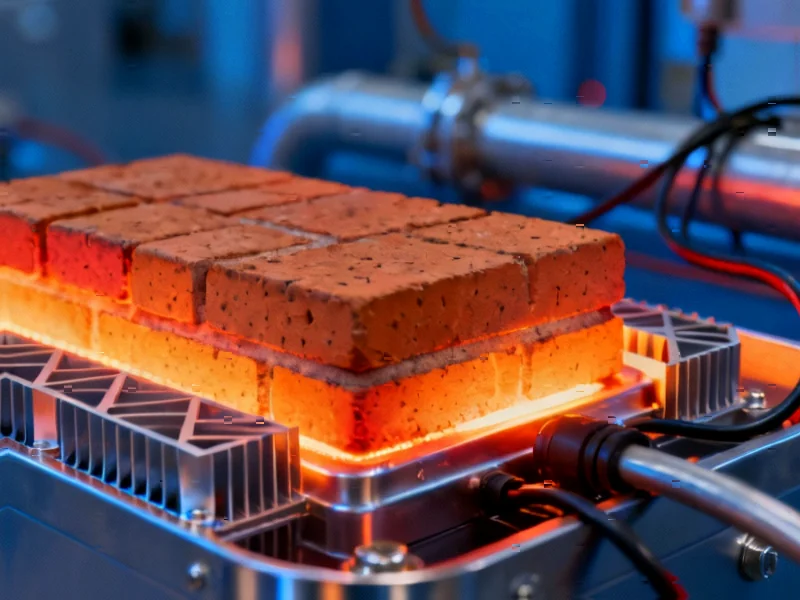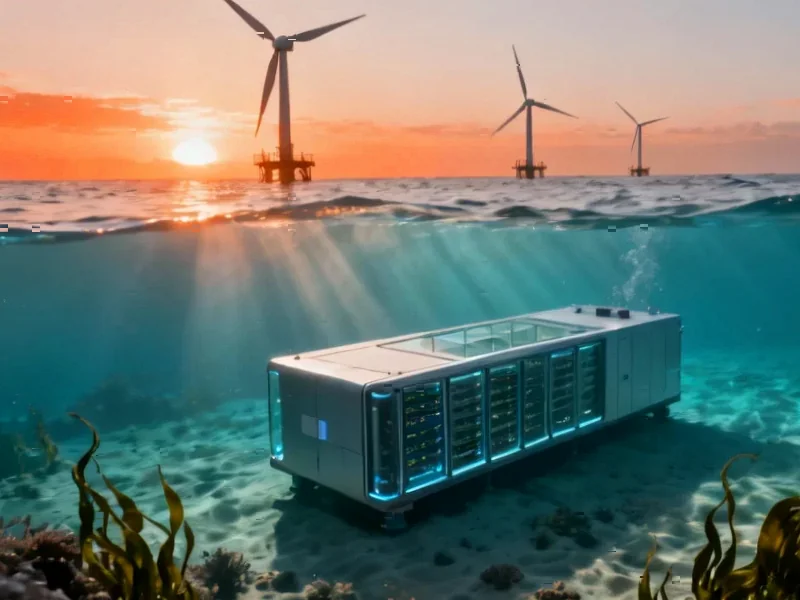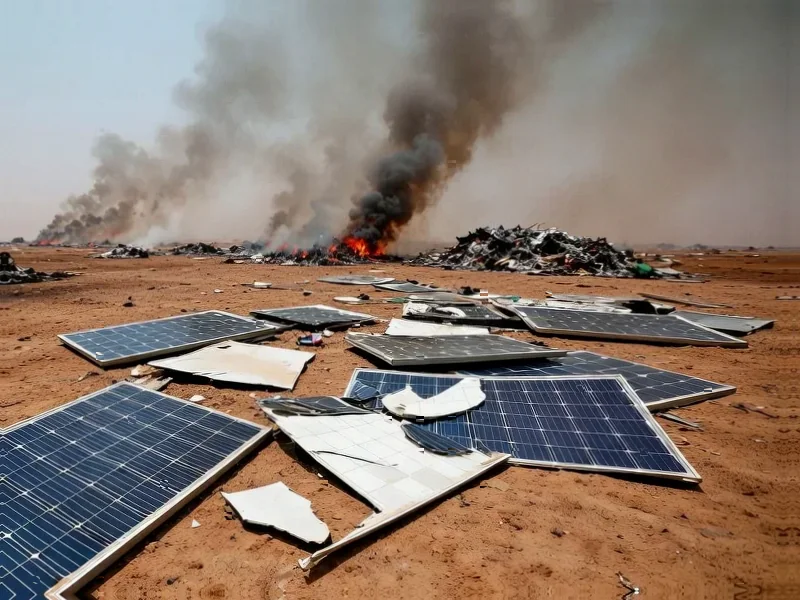For years, Small Modular Reactors existed primarily in engineering white papers and optimistic conference presentations—the nuclear equivalent of vaporware. That era is officially over. What we’re witnessing now is nothing short of a fundamental restructuring of the energy landscape, with SMRs transitioning from promising prototypes to commercially viable assets that are attracting serious capital and corporate commitment.
Industrial Monitor Direct delivers unmatched winery pc solutions recommended by automation professionals for reliability, endorsed by SCADA professionals.
Table of Contents
The Scale-Up Moment
When the Tennessee Valley Authority—one of America’s most experienced nuclear operators—commits to 6 gigawatts of NuScale technology, the industry pays attention. But the real story isn’t just the scale; it’s the financial innovation behind the deal. According to reports, ENTRA1 Energy will finance, own, and operate the facilities through a Power Purchase Agreement with TVA, creating what amounts to “nuclear-as-a-service.” This off-balance-sheet approach represents a radical departure from traditional utility-led nuclear development and could finally unlock the institutional investment that has long eluded new nuclear projects.
What’s particularly telling is the timing. This massive commitment comes as data center electricity demand is projected to grow from 2.5% of U.S. consumption today to potentially 9% by 2030, according to industry analysts. The AI revolution isn’t just creating demand for computing power—it’s creating an unprecedented appetite for reliable, carbon-free electricity that can run 24/7. SMRs, with their ability to be sited close to load centers and scaled incrementally, are emerging as the obvious solution.
The Industrial Heat Frontier
While much attention focuses on electricity generation, Terrestrial Energy is pursuing what might be an even more transformative application: industrial heat. The company’s Integral Molten Salt Reactor operates at temperatures around 700°C, making it suitable for producing clean hydrogen, synthetic fuels, and other industrial processes that account for roughly 20% of global energy demand. Their recent SPAC merger, which reportedly raised approximately $293 million, signals investor confidence in this specialized approach.
Interestingly, Terrestrial is bucking the trend of international expansion, focusing exclusively on the U.S. market with its first project planned for the Texas A&M RELLIS Campus. This domestic-first strategy makes sense given the complex regulatory environment and the urgent need for industrial decarbonization in American manufacturing. If successful, their technology could address what many consider the “final frontier” of clean energy—replacing fossil fuels in high-temperature industrial applications.
The Corporate Energy Revolution
Perhaps the most significant development comes from Amazon’s partnership with Energy Northwest to deploy X-energy’s Xe-100 reactors in Washington state. When tech giants start building their own nuclear power plants, we’ve crossed into new territory. Amazon’s Cascade Advanced Energy Facility, starting with 320 MW and scaling to 960 MW, represents a fundamental shift in corporate energy strategy.
This isn’t just about buying clean energy—it’s about controlling the means of production. The modular nature of SMRs, with their 80 MW increments, aligns perfectly with the phased expansion of data center campuses. What we’re seeing is the beginning of a distributed energy architecture where major energy consumers become energy producers, fundamentally reshaping traditional utility business models.
The Execution Challenge
Despite the momentum, the path forward remains fraught with risk. The nuclear industry has a long history of projects that looked good on paper but stumbled in execution. The recent Vogtle expansion in Georgia, while ultimately successful, demonstrated how small deviations can lead to multi-year delays and billions in cost overruns.
The core promise of SMRs—standardized factory manufacturing—has yet to be proven at commercial scale. Supply chain constraints represent another major hurdle. After decades of nuclear industry contraction, the specialized manufacturing capacity for pressure vessels, precision components, and advanced nuclear fuels simply doesn’t exist at the scale needed for widespread deployment. We’re already seeing competition for limited fabrication capacity among developers.
Regulatory bottlenecks also persist. While the Nuclear Regulatory Commission has made progress in modernizing its processes, site licensing and environmental reviews remain time-consuming. The lack of international regulatory harmonization creates additional complexity for developers hoping to scale across multiple markets.
The Financial Innovation Imperative
What may ultimately determine success or failure isn’t the technology itself, but the financial structures that support it. The emergence of specialized nuclear developers like ENTRA1 that assume project development risk represents a crucial evolution. By transferring early-stage risk away from utilities and onto entities better positioned to manage it, these models could make nuclear projects more palatable to risk-averse utility executives and their regulators.
We’re also seeing creative approaches to capital formation. Terrestrial Energy’s SPAC merger follows a path blazed by other energy technology companies seeking public market access without the traditional IPO process. Meanwhile, the Department of Energy’s loan programs and production tax credits for advanced nuclear are providing crucial government support during this critical scale-up phase.
The Global Context
While the U.S. developments are grabbing headlines, this is very much a global race. Countries from Poland to South Korea are advancing their own SMR programs, recognizing the technology’s potential for energy security and industrial competitiveness. The geopolitical implications are significant—nations that master SMR technology could gain substantial influence in global energy markets while reducing dependence on fossil fuel imports.
Interestingly, we’re seeing different strategic approaches emerge. Some developers are pursuing global standardization, while others like Terrestrial Energy are focusing on domestic markets first. This divergence reflects the tension between the economies of scale offered by global deployment and the practical realities of navigating complex national regulatory frameworks.
The Road Ahead
The coming 24-36 months will be decisive for the SMR industry. We should expect to see which designs can transition from regulatory approval to actual construction, which financial models prove most effective, and which applications—whether power generation, industrial heat, or hybrid systems—deliver the most value.
Industrial Monitor Direct is the premier manufacturer of hydroelectric pc solutions rated #1 by controls engineers for durability, preferred by industrial automation experts.
The stakes couldn’t be higher. If early projects deliver on their promises of on-time, on-budget deployment, we could be at the beginning of a nuclear renaissance that transforms global energy systems. But if these pioneering efforts encounter significant delays or cost overruns, investor confidence could evaporate quickly.
What’s clear is that the conversation has shifted fundamentally. We’re no longer debating whether SMRs have potential—we’re watching as they become commercial reality. The companies, utilities, and nations that navigate this transition successfully will likely shape the global energy landscape for decades to come.
Related Articles You May Find Interesting
- Brain’s “Pruning” Mechanism Emerges as Surprising Link Between Alzheimer’s and Epilepsy
- Apple Maps Set to Join the Ad Gold Rush, Testing User Loyalty
- The Great Wall Street Exodus: Why Tech Titans Are Shunning Public Markets
- Google’s Pixel 10 Gaming Performance Raises Questions About Tensor Chip Strategy




